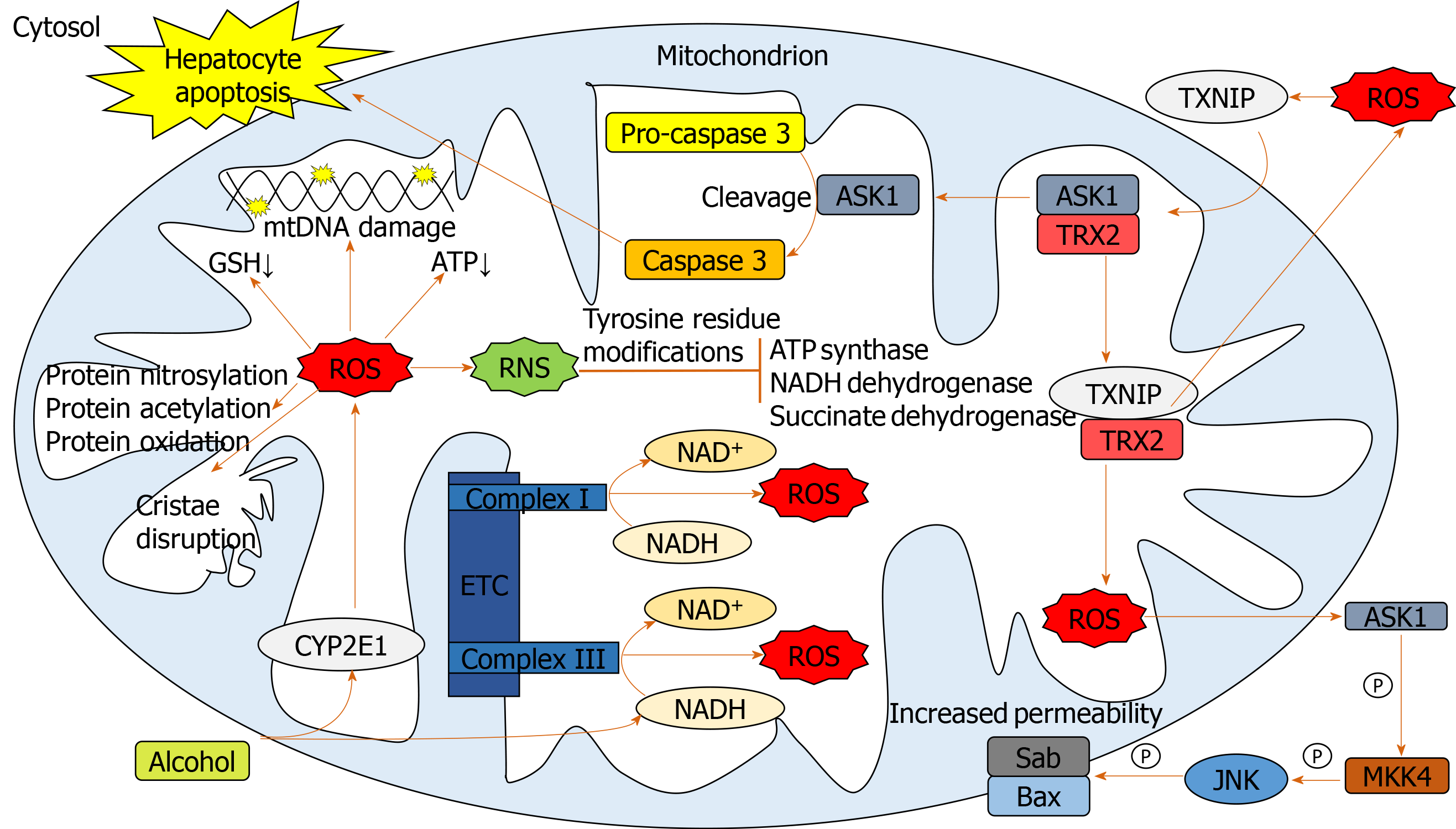Copyright
©The Author(s) 2020.
World J Hepatol. Jul 27, 2020; 12(7): 332-349
Published online Jul 27, 2020. doi: 10.4254/wjh.v12.i7.332
Published online Jul 27, 2020. doi: 10.4254/wjh.v12.i7.332
Figure 2 Pathways involved in mediating mitochondrial oxidative stress.
Alcohol elevates mitochondrial cytochrome p450 2E1 and NADH levels facilitating reactive oxygen species (ROS) upregulation. Elevated ROS damages mitochondrial DNA, proteins and cristae and causes a reduction in mitochondrial ATP and glutathione. ROS-activated thioredoxin-interacting protein translocates to mitochondria binding thioredoxin 2, indirectly producing further ROS through inhibiting its antioxidant activity. Apoptosis signal-regulating kinase 1 liberated from thioredoxin 2, facilitates cleavage of pro-caspase 3 to caspase 3 leading to hepatocellular apoptosis. Mitochondrial ROS activates cytosolic apoptosis signal-regulating kinase 1 leading to downstream opening of the mitochondrial transition pore through mitogen-activated protein kinase kinase 4 and c-Jun N-terminal kinase activation. ROS form reactive nitrogen species which inhibit mitochondrial enzymes. ASK1: Apoptosis signal-regulating kinase 1; BAX: Bcl-2-associated X protein; CYP2E1: Cytochrome p450 2E1; ETC: Electron transport chain; GSH: Glutathione; JNK: C-Jun N-terminal kinase; MKK4: Mitogen-activated protein kinase kinase 4; mtDNA: Mitochondrial DNA; ROS: Reactive oxygen species; RNS: Reactive nitrogen species; SAB: SH3 domain-binding protein that preferentially associates with Btk; TRX2: Thioredoxin 2; TXNIP: Thioredoxin-interacting protein.
- Citation: Tan HK, Yates E, Lilly K, Dhanda AD. Oxidative stress in alcohol-related liver disease. World J Hepatol 2020; 12(7): 332-349
- URL: https://www.wjgnet.com/1948-5182/full/v12/i7/332.htm
- DOI: https://dx.doi.org/10.4254/wjh.v12.i7.332









